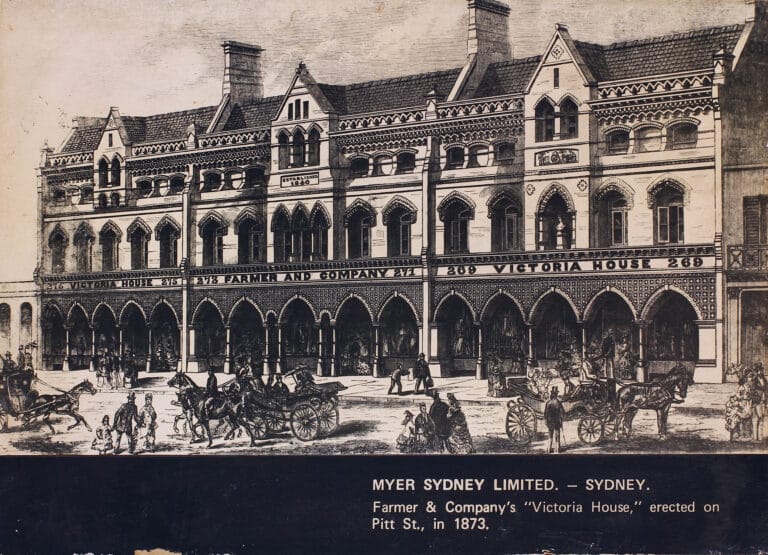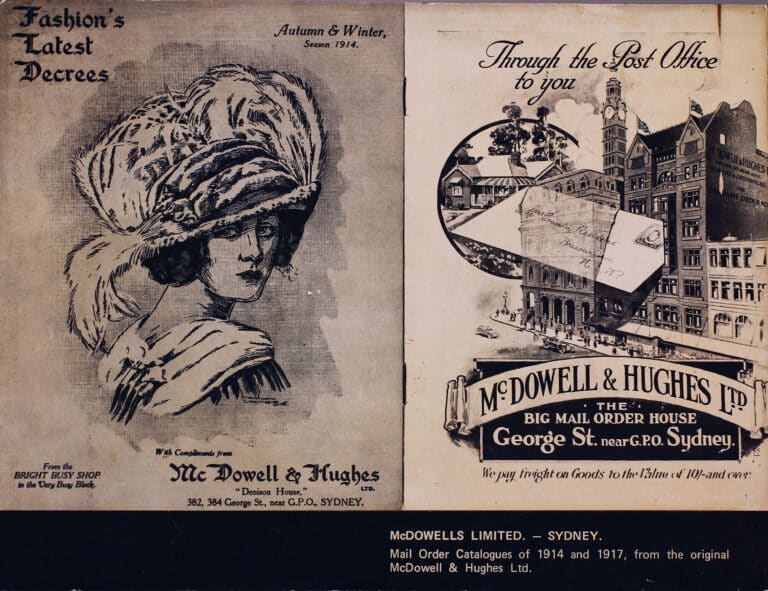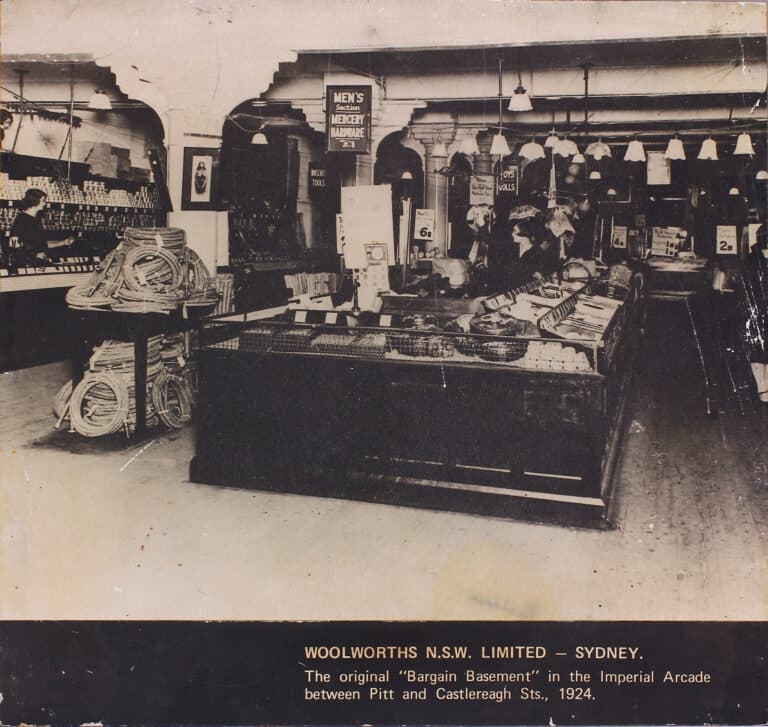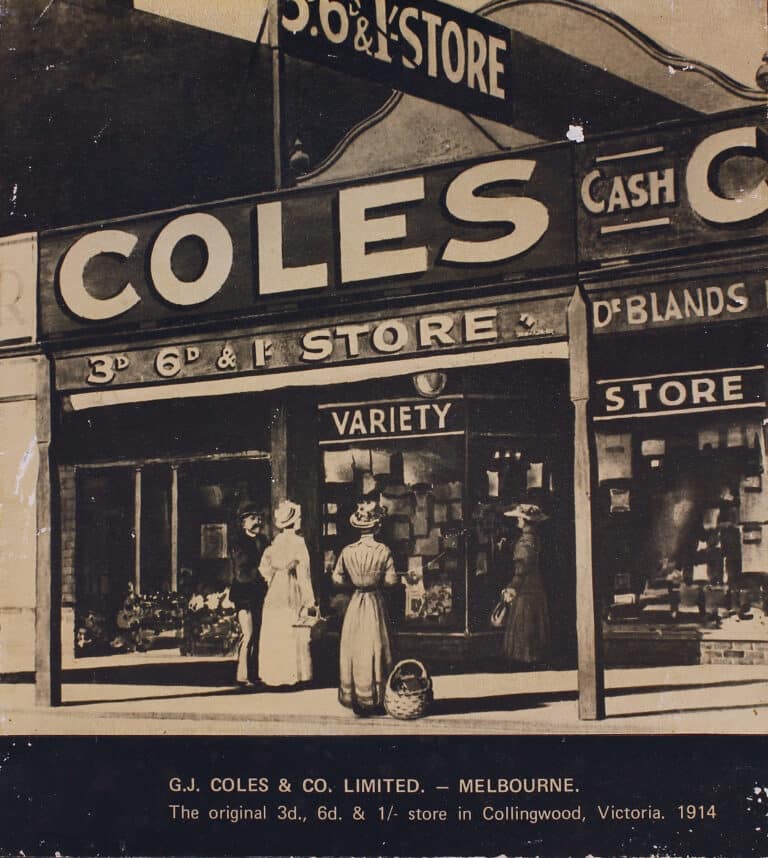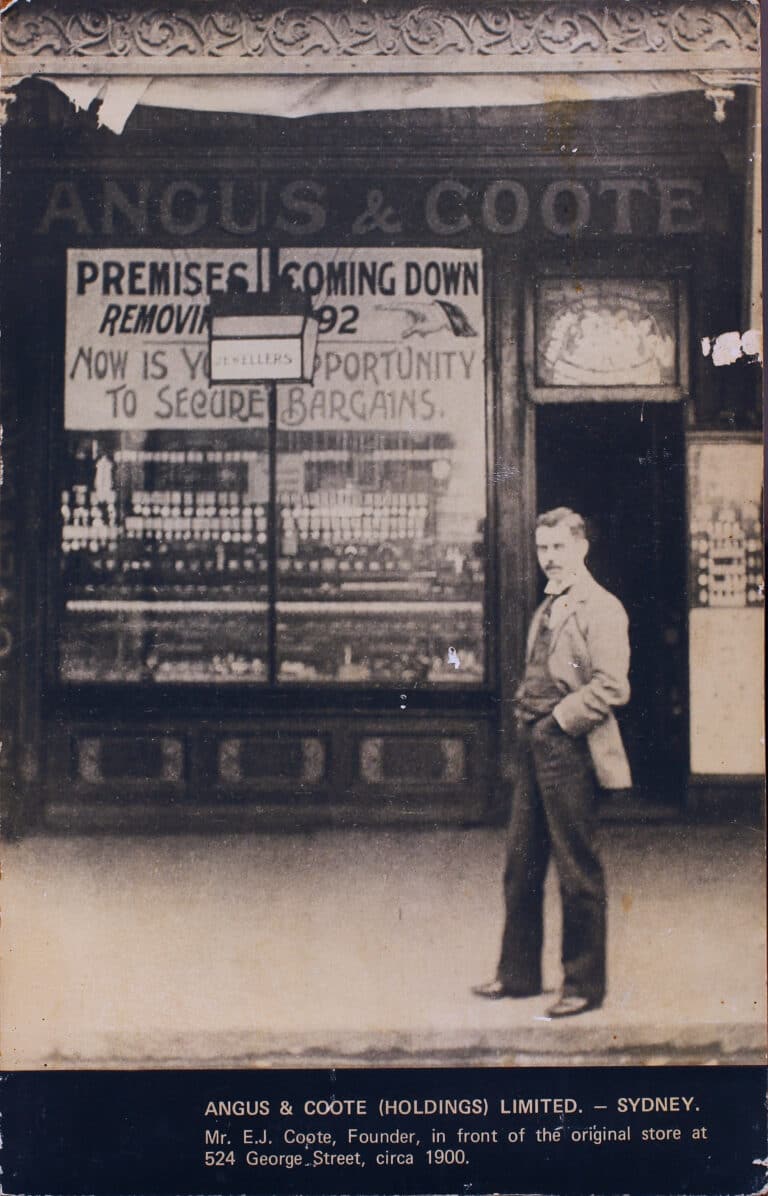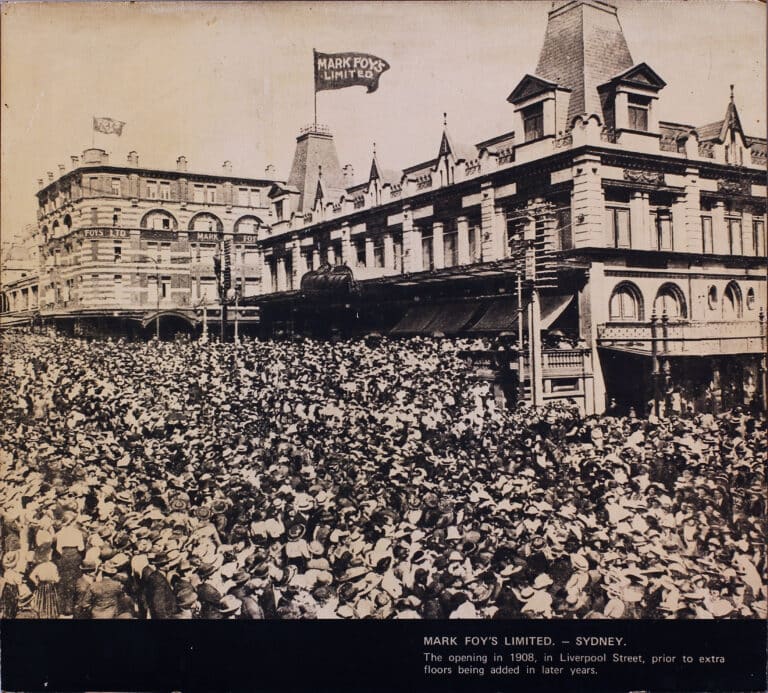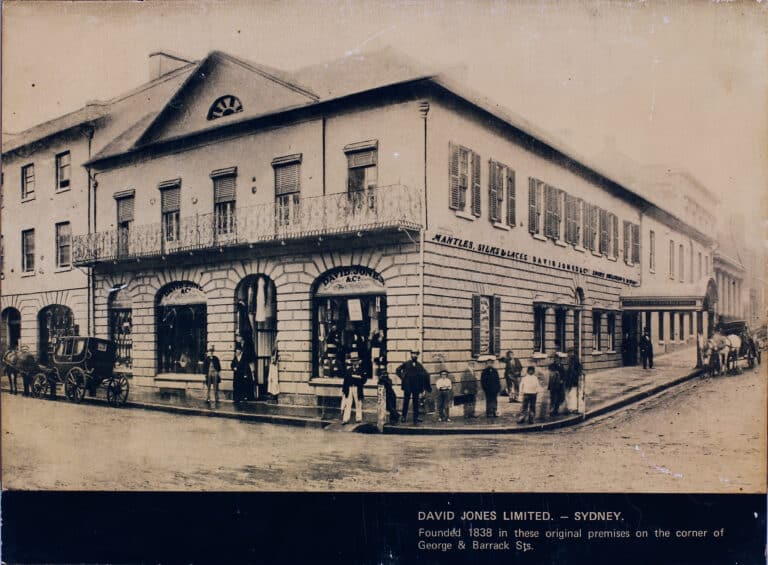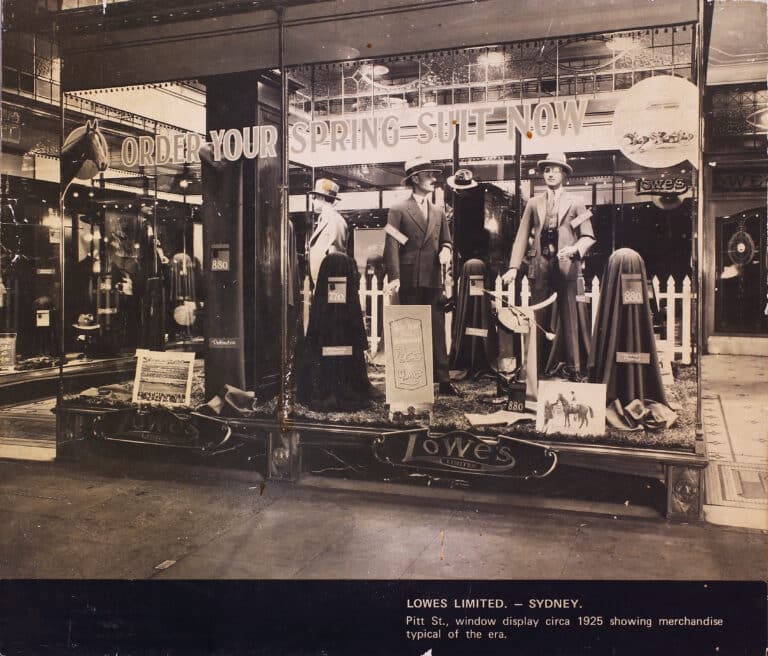OUR HISTORY
The Australian Retailers Association (ARA) is the oldest, largest and most diverse national retail body, representing a $430 billion sector that employs 1.4 million Australians.
The ARA has gone through many iterations over the years to become the contemporary organisation it is today, representing retailers large and small from food to fashion, hairdressing to hardware and cosmetics to computers.
The ARA unifies independent, national and international retail businesses under a shared vision and purpose, advancing the interests of Australia’s largest private sector employer.
How it all began
The Master Retailers Association of NSW was founded in 1903, and its formation reflected the buoyant and optimistic outlook at the time. Australia had just federated, there was a new constitution, and the economy was growing thanks to the industrial revolution. The conditions were right, and retailers saw it as an ideal time for the start of a cooperative effort.
As the NSW organisation began to grow and prosper, other state-based associations were established as well.
State-associations in war-time collaboration
With the advent of World War II, the Australian Council of Retailers was formed in 1940, with its membership including each of the state-based retail associations. The creation of the Australian Council of Retailers was not only for the benefit and protection of retailer’s interests but also to give greater assistance to the Government in connection with the war-time regulations and laws.
The Australian Council of Retailers functioned until 1974 when it changed its name to the Australian Retailers Association, however it continued to change names in the 80s and 90s as well.
1990s bring amalgamation and a new retail training offering
A significant milestone was achieved in 1995 when the ARA Retail Institute was established – a Registered Training Organisation that to this day continues to provide training and development opportunities for people at various stages in their retail careers.
In the 1990s, there was also a major shift to national awards with Victoria the first to hand over its state-based awards to the federal system. In 1996 – as a response to this trend – the different state-based retail associations agreed the issues affecting retailers were no longer exclusively covered by state governments and that a strong nationwide organisation was essential for a consistent industry response across Australia. Based on this consensus, it was agreed that all state-based associations amalgamate to become the Australian Retailers Association (ARA).
A true national organisation and the GFC hits
The process of amalgamation took almost two and a half years to complete, and on 1 December 1998, a Heads of Agreement was signed that paved the way for restructuring the organisations from a federated council into a national body. In May 2004, a new registered organisation was approved under the Workplace Relations Act in which the various state bodies became divisions of the ARA. Queensland was the only state not to join, and to this day continues to be represented by its own state-based association which claims to be a national body.
In October 2006, the state divisions of the ARA were abolished, and a new structure was created that saw the ARA become a true national organisation. The assets of the individual divisions were merged and a new national ARA Council, which serves as its board, provided representation for both single state and national operators throughout Australia was established.
The global financial crisis between mid-2007 and early 2009 hit the retail sector hard and the recovery relied on a combination of events in the hope of encouraging customers back to stores. Major structural changes to retail models, particularly online retailing, changed the landscape of the industry as new technology emerged. Businesses had to adapt to survive as more consumers embraced online shopping options.
The dawn of a new era for the ARA and a global pandemic strikes
The 2020s continued to deliver a significant amount of change for both the ARA in terms new leadership, a rebrand and repositioning of the Association and with that significant membership growth amongst severe disruption to the sector in the form of Covid-19 and natural disasters due to climate change.
Whilst most of the ARA membership (95%) continues to be small to medium size retailers, the ARA welcomed the major retailers to its membership during this time which truly strengthened the ARA as the leading unified voice to government and other key stakeholders. Other industry associations united under the ARA banner. Members of the former Australian National Retailers Association – which later became the Retail Council and dissolved in 2015 – came together and joined the ARA. The Hair and Beauty Industry Association (HBIA) and key Quick Service Restaurants also joined during this time and formed their own separate advisory committee as part of the ARA family.
As natural climate disasters and the pandemic took hold, retail businesses saw the value in joining the ARA, so they are part of a united voice representing the issues and values that are important to them. Diversity, Equality and Inclusion, and Sustainability with the current climate crisis, were key opportunities within the sector to quickly become the industry’s strategic imperatives.
In the aftermath of the crisis, the ARA played an essential role in supporting its members contributing to the industry’s law and regulatory reform and targeted training and education to reinvigorate the sector’s business leaders, owners and employees.
As 2022, came to a close, the National Footwear Association, which had been helping independent footwear companies for 60 years joined Australia’s largest association further adding to a unified voice for the sector.
In 2023, the ARA celebrates 120 years in informing, advocating, educating and unifying the retail industry. During this year, the Australian Association for Floral Designers (AAFD) merges with the ARA after a strong history of more than 45 years in advocating on behalf of their members.
Milestones in the ARAs history
1903: Master Retailers Association of NSW formed
1910: Master Grocers Association joined Master Retailers Association of NSW
1921: Name changed to the Retail Traders’ Association of New South Wales
1940: Australian Council of Retailers formed
1943: First Australian Council of Retailers annual conference held in Melbourne
1974: Australian Council of Retailers becomes the Australian Retailers Association
1989: Australian Retailers Association becomes the Retail Traders Association of Australia
1991: The Retail Traders Association of Australia becomes the Retail Council of Australia
1995: The Retail Institute is established – a Registered Training Organisation
1998: Heads of Agreement from state associations signed to amalgamate into the Australian Retailers Association
2004: Australian Retailers Association approved as a registered organisation under the Workplace Relations Act
2006: State divisions abolished, and the Australian Retailers Association becomes a national body
2020: Australian Retailers Association acquires the Hair and Beauty Industry Association. The former members of Australian National Retailers Associations (Retail Council) join the Australian Retailers Association
2022: National Footwear Association merges with the Australian Retailers Association
2023: The Australian Association for Floral Designers (AAFD) merges with the Australian Retailers Association.
The ARA is the successful applicant for federal government grant funding and establishes the new entity, SkillsEQuipped- one of ten new federally funded Jobs and Skills Councils (JSCs) for the retail, personal services, hospitality, tourism and the arts sector. These JSCs, formerly known as Industry Clusters, were established to provide industry with a stronger, more strategic voice in ensuring Australia’s VET sector delivers stronger outcomes for learners and employers.
The ARA celebrates 120 years of informing, advocating, educating and unifying the Australian retail industry.
Archival photos
